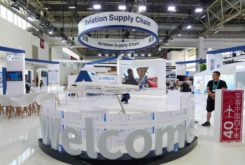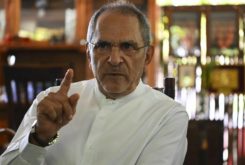Asia’s newest country stands at the economic crossroads. The development of the Greater Sunrise oil and gas project looks more likely to proceed than at any time for a decade but is still not guaranteed. In the meantime, existing gas fields are being run down, while the government has few long term options to generate more income and could easily be toppled by political infighting.
President Francisco Guterres, popularly known as Lú-Olo, described the political stalemate that paralysed the country during the latter part of 2017 and early months of 2018 as creating “fear and uncertainty”. Then-prime minister Mari Alkatiri was unable to force legislation through parliament with his minority government, prompting Guterres to dissolve parliament in January. Yet it took until May for the country’s fifth independence-era election to be held.
The poll was won by the coalition group called the Alliance of Change for Progress (AMP), which took 34 out of the 65 seats on offer, with former president Jose Maria de Vasconcelos – often known by his nom de guerre, Taur Matan Ruak – nominated as prime minister. The AMP comprises three parties: the National Congress for Timorese Reconstruction (CNRT); the People’s Liberation Movement (PLP); and Enrich the National Unity of the Sons of Timor.
As ever, politics in the country remain dominated by a handful of ‘big men’, mainly resistance leaders during the long struggle against Indonesian occupation. Former guerrilla fighters and their families tend to vote for their former commanders, who in turn have increased veterans’ pensions.
It was clear from the start that the election of a new government would not end the political instability. A day before he took office, the new prime minister had eight of his proposed cabinet rejected by President Guterres because of ongoing corruption investigations, while another ministerial appointment has been blocked since then.
Ministerial stand-off
Guterres has asked the Anti-Corruption Commission and the prosecutor-general to investigate the nine, creating a tense atmosphere between the government and presidency. The biggest of the three constituent parties in the AMP, the CNRT, has threatened to impeach Guterres if he does not back down over the issue. Doing so would require a two-thirds majority in parliament. As Timor-Leste has only been a sovereign state for 16 years, its constitution has not been thoroughly tested. There is therefore some dispute over whether the president, as guarantor of sound government – has the right to block the proposed appointments.
Writing to Guterres, the CNRT argued: “We want to say … that these people are the top leadership of the CNRT who have been voted in and been entrusted by the people of our nation.” It is worth noting that this letter was sent by the CNRT rather than by the wider alliance, the AMP. If CNRT ministerial nominees are blocked, this could open the way for the other alliance parties to nominate replacements. Some have alleged that the other two alliance parties are secretly backing the president’s stance in order to secure more places for themselves in the new cabinet.
The prosecutor-general wants the Anti-Corruption Commission to be given wider reaching powers to investigate and pursue alleged miscreants. Parliament is currently considering including the powers in a wide ranging bill that would allow the Commission to investigate those with wealth of unknown providence. The biggest problem is that the bill was introduced to parliament by the biggest opposition party, the Revolutionary Front for an Independent East Timor (Fretilin), and so could be opposed by parts of the governing alliance.
Aderito de Jesus Soares, the anti-corruption commissioner, told journalists: “Timor-Leste, as a post-conflict society, is confronting the problem of corruption…There remain a number of significant factors that make Timor-Leste at least potentially prone to corruption. Among these are the fledgling nature of state institutions, and the legal framework that remains a work in progress, and which is weak.”
It remains to be seen how well the AMP can work together and how long it will survive. The PLP campaigned on an anti-corruption platform at the election, linking corruption allegations to persistently highly levels of poverty. Roughly 40% of all children are malnourished and per capita GDP stood at just US$1,239 last year. However, James Scambary of Australia’s Deakin University, believes that ‘corruption’ in the country is often viewed merely as some people getting more than others.
Much will depend on how well the government manages to turn the economy around. The Petroleum Wealth Fund currently covers the lion’s share of government expenditure, which stood at US$1.83 billion last year. The Fund has contributed US$14 billion to government spending to date, with all income generated by the Bayu Undan gas-condensate field. Yet reserves on that project are likely to become exhausted sometime between 2022 about 2025.
Greater Sunrise
The government is largely banking on the development of the Greater Sunrise oil and gas project to turn national finances around. Given that hydrocarbon reserves on the project are estimated to be worth US$65 billion at current commodity prices, it could hardly be otherwise. Yet talks over Greater Sunrise – and indeed over wider economic policy – have been affected by political infighting in Dili, Australian interference and a dispute over the sovereignty of territory in the Timor Sea (link to my piece on the deal: https://clbrief.com/greater-sunrise-at-last/).
The scheme took a giant step closer to development on 6 March, when the governments of Timor-Leste and Australia signed a boundary delimitation agreement. However, even with the bilateral deal in place, the project consortium of Woodside Petroleum, with a 33.44% stake, ConocoPhillips (30%), Shell (26.56%) and Osaka Gas (10%), still needs to strike a deal with Timorese and Australian governments. Moreover, the two governments must still agree the terms of their production sharing agreement (PSA).
In the latest development, it has emerged that Dili is keen to buy into the project consortium. The country’s chief oil sector negotiator and former president, Xanana Gusmao, is believed to be considering a US$5 billion offer to buy the 30% stake held by ConocoPhillips, although no details on why the US company’s equity in particular is being targeted have been revealed. The government would increase its share of revenues through the investment but would also have to provide its share of capital investment costs.
The government of Timor-Leste had pledged to ensure that the project’s LNG plant was built on its south coast rather than in Australia’s Northern Territory, although this would reduce its share of governmental revenues in the proposed PSA from 80% to 70%, with Australia taking the remainder.
Dili favours this option because it wants to promote industrialisation and to enable it to capture more of the economic benefits of the scheme. The development consortium strongly favours piping the gas to Australia for processing, while there is a strong case to be made for Timor-Leste taking the extra 10% profit share instead and investing it in other ways.
Conceding this demand would be politically difficult but Gusmao may view a direct 30% stake in the project consortium as suitable compensation. It would also give the government a more direct say in the development of Greater Sunrise, while providing an additional income stream.



